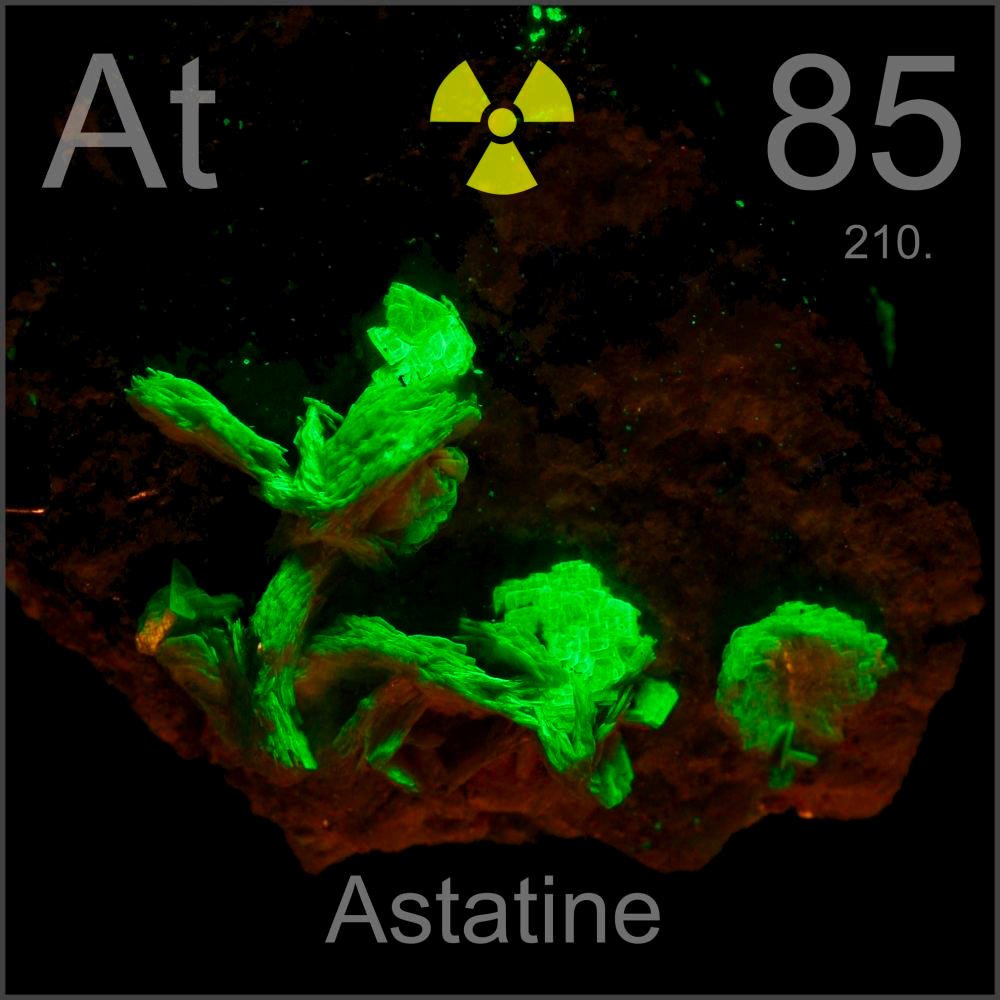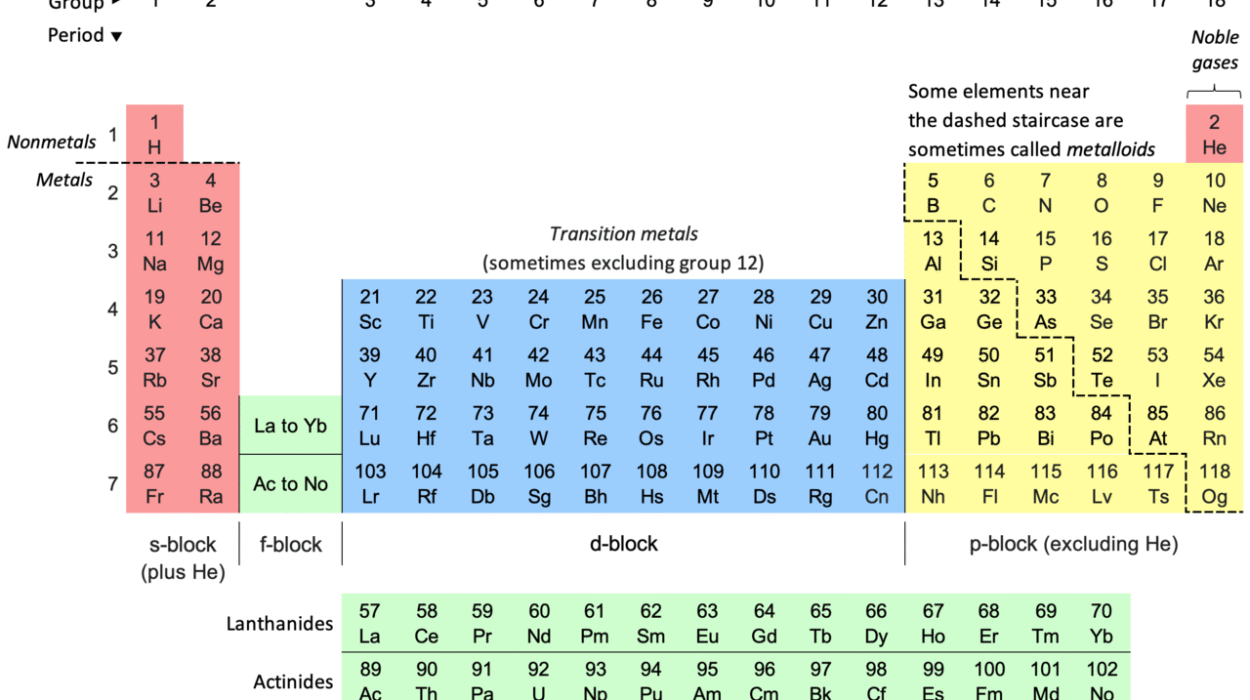When you think of elements, the big names probably pop into your mind first: oxygen, carbon, gold, iron. Maybe a few exotic ones like uranium or plutonium too. But lurking deep within the periodic table are rare and mysterious elements, some so obscure that even seasoned science enthusiasts might raise an eyebrow at their names. These elements are elusive not only because of their scarcity but also because of their bizarre properties, complicated histories, and, often, their fleeting existences.
In this deep dive, we’ll uncover ten rare elements you’ve likely never heard of—elements that whisper from the edges of human knowledge, that hide in meteorites, nuclear reactors, or the heart of distant stars. These aren’t just chemical curiosities; they’re keys to future technologies, mysteries of the cosmos, and treasures of scientific inquiry. Get ready to meet the most elusive characters on the periodic stage.
1. Astatine: The Phantom Element
Imagine an element so rare that the entire Earth contains less than 30 grams of it at any given time. That’s astatine (At), atomic number 85, a ghostly member of the halogen family that’s virtually impossible to study in its natural form.
Astatine is produced naturally in minute amounts through the decay of heavier elements like uranium and thorium. Because it’s highly radioactive with an extremely short half-life (the most stable isotope, astatine-210, lasts about 8.1 hours), it disappears almost as soon as it forms. As a result, chemists have had to infer much of astatine’s behavior through clever experiments and computer modeling.
Despite its fleeting nature, astatine tantalizes scientists with its potential uses. In cancer treatment, it could be employed to deliver targeted radiation therapy, delivering lethal doses to tumors while sparing healthy tissue. However, its rarity and instability mean that practical applications remain a significant challenge.
In the vast symphony of elements, astatine is a barely audible whisper—mysterious, transient, and profoundly alluring.
2. Rhodium: The Shining Star of Precious Metals
While gold and platinum get all the glory, rhodium (Rh), atomic number 45, is arguably the real king of the precious metals world—rarer, more expensive, and extraordinarily valuable.
Rhodium is silvery-white, highly reflective, and incredibly resistant to corrosion. Found primarily in platinum ores in South Africa, Russia, and Canada, it’s one of the rarest naturally occurring elements in Earth’s crust. Its applications are equally elite: it’s crucial in catalytic converters, helping to reduce toxic emissions from vehicles. Rhodium is also used in jewelry (giving white gold its bright sheen) and in high-precision instruments.
The market price of rhodium often spikes dramatically, sometimes surpassing ten times the price of gold. This volatility is partly because its supply is tightly controlled and mining it is fraught with geopolitical and technical difficulties.
Despite its brilliance, rhodium remains relatively unknown outside industrial and investment circles—a glittering secret of the periodic table.
3. Promethium: The Element of Eternal Light
Named after Prometheus, the Greek titan who stole fire from the gods, promethium (Pm), atomic number 61, carries a mythic aura. It’s one of the few elements that does not have any stable isotopes—all its forms are radioactive.
Promethium is extraordinarily rare on Earth, produced mainly in trace amounts by the spontaneous fission of uranium or in laboratories through nuclear reactions. Estimates suggest that no more than 600 grams exist in Earth’s entire crust.
Despite its scarcity, promethium has found niche applications. In luminous paint, it can make devices glow without an external power source. It’s used in certain types of atomic batteries designed to last for decades, powering devices in space or remote locations where changing a battery would be impossible.
Promethium is like a secret ember smoldering in the dark—a hidden flame that humanity can barely touch.
4. Rhenium: The Heat Resister
Rhenium (Re), atomic number 75, is a quiet powerhouse of the periodic table. It’s incredibly rare, often found in molybdenite ore at about one part per billion, making it one of the scarcest stable elements in Earth’s crust.
What makes rhenium truly remarkable is its resistance to heat. It boasts the third-highest melting point of all elements (behind tungsten and carbon), making it ideal for jet engines, rocket nozzles, and other extreme environments. Without rhenium, many high-performance aerospace applications simply wouldn’t be possible.
In addition to its thermal properties, rhenium is used in catalysts for producing lead-free gasoline—a critical step in cleaner automotive emissions.
Despite its essential role in modern technology, rhenium remains largely invisible to the public consciousness, a backstage hero enabling the marvels of modern transportation and industry.
5. Thulium: The Hidden Laser
Thulium (Tm), atomic number 69, is the least abundant of the rare-earth elements and one of the most obscure. Named after Thule, a mythical far-northern land, thulium carries an aura of ancient mystery.
While it’s rare and difficult to extract, thulium is remarkably useful. Its compounds are used in portable X-ray machines, where it acts as a reliable source of radiation. Thulium-doped lasers are employed in medicine, especially in surgical procedures where precision cutting is critical.
Despite its obscurity, thulium’s gentle greenish-silver glow and practical applications hint at a future where such rare elements quietly revolutionize technology without ever becoming household names.
6. Francium: The Rarest of the Alkali Metals
Francium (Fr), atomic number 87, is so rare that scientists have never assembled a visible quantity of it. It’s an alkali metal, like sodium or potassium, but its intense radioactivity and extreme instability mean that it exists only in tiny traces in uranium ores.
At any given moment, only a few dozen atoms of francium may exist on Earth. It decays so quickly that its chemical properties can only be theorized based on its place in the periodic table and brief experimental glimpses.
Its rarity makes francium largely impractical for any technological use. However, it represents one of the most extreme examples of element scarcity and remains a fascinating focus for physicists interested in the behavior of atoms near the edge of stability.
Francium is the elemental equivalent of a ghost—intangible, elusive, and awe-inspiring in its mystery.
7. Osmium: The Densest Natural Element
Osmium (Os), atomic number 76, might not be rare in the strictest sense—it’s about as abundant as gold—but it remains relatively unknown outside of specialized scientific circles. And yet, osmium is extraordinary: it’s the densest naturally occurring element.
A cubic centimeter of osmium weighs more than 22 grams, making it stunningly heavy for its size. It has a bluish-silver sheen and is incredibly hard and brittle at room temperature.
Osmium’s density makes it valuable in certain specialized applications, such as in fountain pen nibs, electrical contacts, and extreme-pressure instruments. Its compounds are also potent catalysts in organic chemistry.
However, osmium tetroxide—a volatile compound of osmium—is highly toxic and volatile, which limits its broader use. Nevertheless, osmium remains a heavyweight champion in the secret leagues of elemental marvels.
8. Tellurium: The Solar Metal
Tellurium (Te), atomic number 52, is a metalloid with properties that make it indispensable in certain high-tech applications, especially in the renewable energy sector.
Though it is more common than some elements on this list, tellurium is rarely found in its pure form. Instead, it’s often extracted as a byproduct of copper and lead mining. Its primary claim to fame today is in the manufacture of cadmium telluride solar panels, where it helps convert sunlight into electricity with impressive efficiency.
Tellurium also strengthens metals and improves their resistance to corrosion. In electronics, it enhances the performance of thermoelectric devices, which can convert heat into electricity.
With its shiny luster and incredible utility, tellurium is a key player in the green energy revolution, even if most people have never heard its name.
9. Californium: The Element That Can Start Nuclear Reactors
Californium (Cf), atomic number 98, is a synthetic element produced in particle accelerators by bombarding curium with alpha particles. It’s intensely radioactive and extremely rare, with only a few milligrams produced annually worldwide.
Despite its rarity, californium has some staggering uses. One of its isotopes, californium-252, is a powerful neutron emitter. This property allows it to help start up nuclear reactors, detect gold and silver ores, and even treat certain types of cancer.
Handling californium is, unsurprisingly, fraught with danger. It requires heavy shielding and extreme precautions to prevent radiation exposure.
Californium embodies the potent duality of rare elements: immense potential coupled with equally immense peril.
10. Lutetium: The Forgotten Rare Earth
Lutetium (Lu), atomic number 71, is the last in the lanthanide series and one of the least known rare earth elements. It’s incredibly difficult to separate from other rare earth elements and, consequently, extremely expensive.
Despite its low profile, lutetium has found impressive uses. It’s used in PET scan detectors in medical imaging, petroleum refining catalysts, and even in certain types of lasers.
Because it’s so rare and costly, its use remains specialized, but scientists are increasingly looking at lutetium compounds for potential applications in cancer treatment and quantum computing technologies.
Lutetium is a silent performer, an unseen player that may yet shape the future of science and medicine in profound ways.
Conclusion: The Untold Stories of the Elements
The periodic table is often presented as a neat, orderly chart—a finished product. But hidden within its ranks are elements like astatine, francium, californium, and thulium: rare, mysterious, and brimming with untapped potential. These elements tell a deeper story, one of continuous discovery, relentless curiosity, and the ever-expanding boundaries of human knowledge.
Many of these rare elements live lives measured in milliseconds, or exist only under the most extreme conditions. Yet even their brief existence matters. They help us probe the limits of atomic structure, power our technologies, treat our diseases, and illuminate the fundamental workings of the universe.
The periodic table, it turns out, is less like a static library and more like a living organism—evolving, growing, and revealing new secrets as our understanding deepens.
So the next time you glance at the periodic table, remember: beyond the familiar names lies a hidden world of rare, strange, and wondrous elements, each with a story as rich and compelling as any myth or legend.






